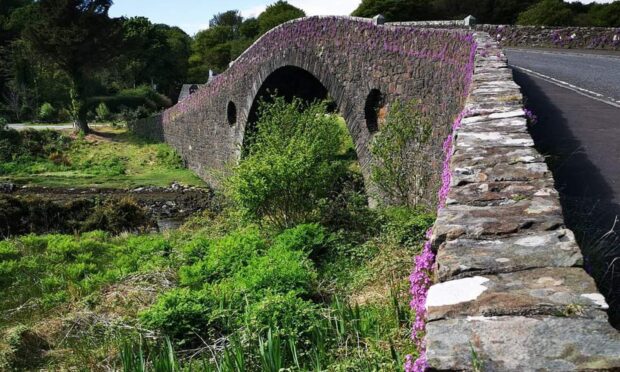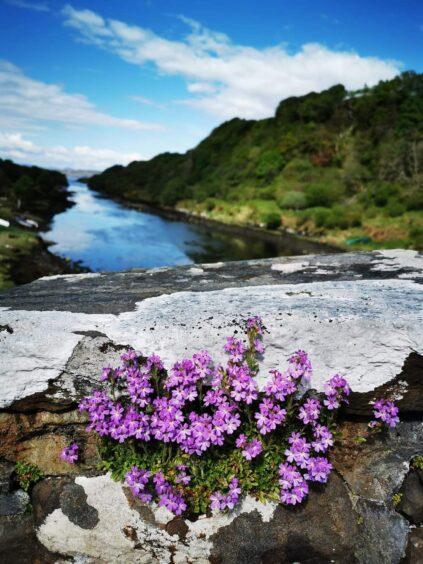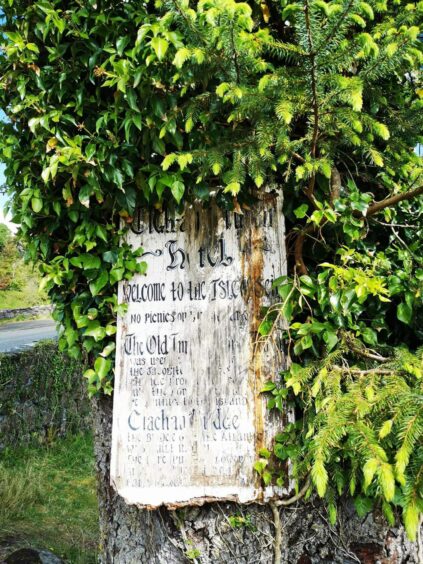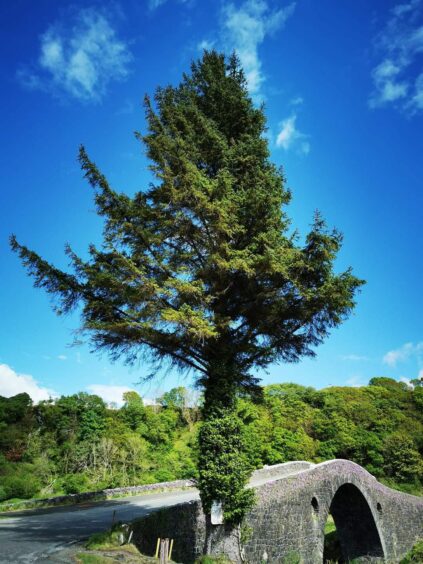A display of flowers on the Bridge over the Atlantic has started to bloom.
The wild foxgloves with the latin name of “erinus alpinus” is often regarded as the beginning of summer.
The Bridge over the Atlantic, or the Clachan Bridge, was when built in the 1700s, was the only crossing over the Atlantic.
The bridge is the only route onto the island by road – despite the bridge being built in 1792 and 1793 – and it remains busy with residents of the island and those accessing the isles of Luing and Easdale.
The bridge is a simple, single-arched, hump-backed, masonry bridge spanning the Clachan Sound.
The bridge was originally designed by John Stevenson of Oban and constructed by engineer Robert Mylne.
‘A’ Dhrochaid thar a’ Chuain Siar’
The bridge forms part of the B844 road, and is in the care of Historic Scotland.
Because the Clachan Sound connects at both ends to the Atlantic Ocean, and might therefore be considered part of that ocean, the bridge came to be known as the Bridge over the Atlantic.
It’s name in Gaelic is a’ Dhrochaid thar a’ Chuain Siar.
Other bridges such as the Brúgvin um Streymin in the Faroe Islands and between Lewis and Great Bernera in the Outer Hebrides, also describe themselves as a Bridge over the Atlantic.
The area is steeped in history, with the first hostelry visitors reach when crossing the bridge is the Tigh An Truish – the House of the Trousers.
Now a gastro pub, fable says it was the place where men. returning from war, were able to change out of their trousers and back into kilts, after the wearing of Highland dress was outlawed in 1746k in The Dress Act.




Conversation